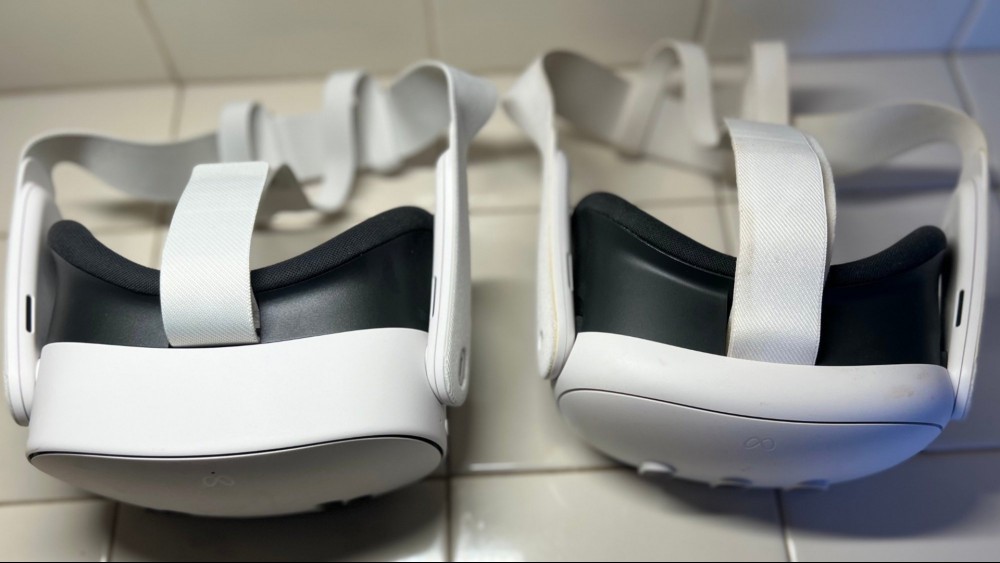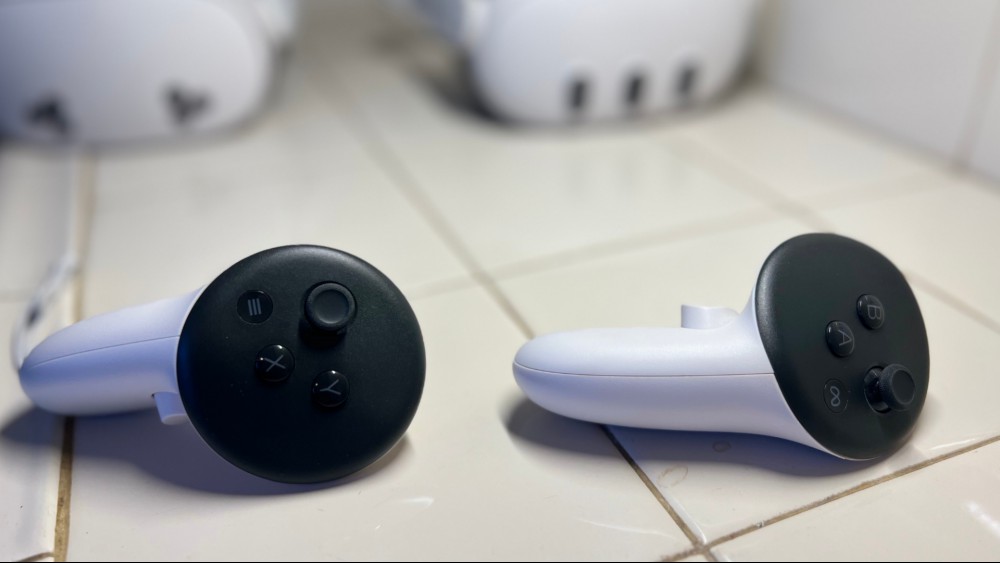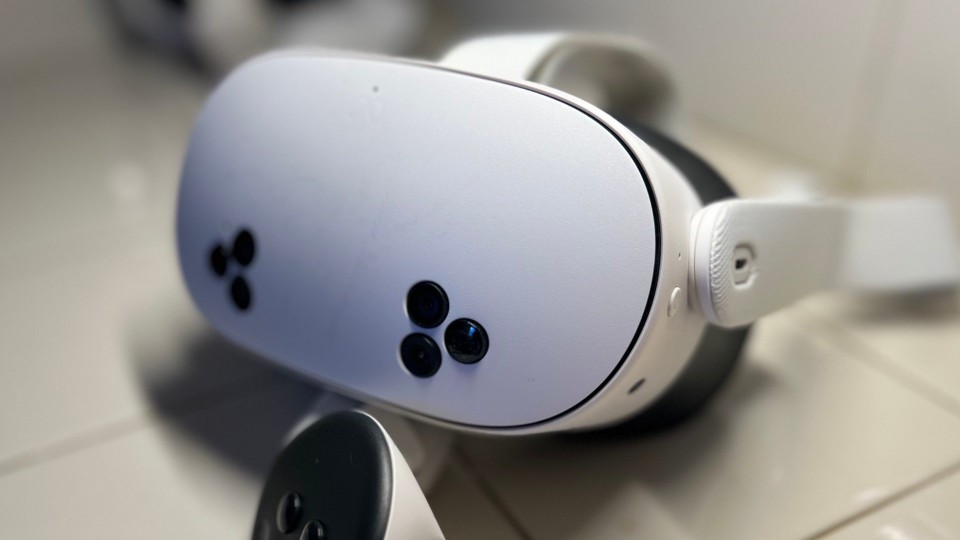If you're looking for a standalone VR headset, there's really only one player in the game: Meta. The company's line of Quest headsets accounts for nearly 75% of all VR headsets sold—leaving Apple, Valve, and every other VR-hardware company fighting over scraps.
It may be Meta's world, but consumers still have a choice between the company's Quest 3, released in 2023, and its slightly downgraded brother, the Quest 3S that came out in 2024. I've used both extensively, and while the Quest 3 has better specs in some areas, if you're judging based on how much fun you'll have and how much you'll pay, the 3S is a better product, hands-down.
I've thrown both headsets into the VR battle pit, comparing their design, power, graphics, and price to determine the ultimate winner in the Meta vs. Meta battle of the century.
Price
While prices change fairly frequently with sales and promotions, the base price of a Quest 3 with 518GB of memory is $499. The Quest 3 with 128GB of memory is $299. There's an obvious winner here.
Winner: Quest 3S
Design and comfort

Wearability is a vital factor in choosing VR gear. No matter how impressive the technology inside a headset, if it's uncomfortable, I'm not going to use it for long. Both the Quest 3 and Quest 3S are way more comfortable than the previous generation of Quest headsets. The head strap is the same on each—it's simple and does its job well. The design of the actual units are similar, but not identical. The Quest 3's pancake lenses are flatter, so the unit is a bit less front-heavy, and thus slightly more comfortable, especially if you're wearing them for a long time. The body of the Quest 3S weighs a gram less than the Quest 3 (514g vs. 515g), but the weight isn't distributed the same, so the Quest 3 wins "most comfortable" by a hair.
Winner: Quest 3 (but barely)
Graphics
The graphics are the main difference between these two devices. The Quest 3S's lower price comes down to the visuals. Its resolutions is 1,832 X 1,920 per eye for 773 pixels per inch, compared to the Quest 3's 2,064 X 2,208, for 1,218 pixels per inch. The Quest 3 also has a broader field of view: 96 degrees vs. 90 degrees.
To avoid getting far into the weeds of the advantages the Quest 3's pancake lenses have over the 3S's Fresnel lenses in terms of adjusting inter-axial distance and pupillary distance, I'll just say that the "VR sweet spot," where everything looks as it should, is easier to adjust and achieve with a Quest 3.
A million fewer pixels sounds like a lot, and our grandparents didn't fight Hitler so we could have narrow fields of view, but in practice, the slight downgrade in the 3S didn't make much difference to me. If you're looking from one to the other, you can tell the difference, but it's not dramatic. New users to VR are going to be blown away by the graphics on either machine.
Winner: Quest 3
Processor
Both headsets are powered by the same Snapdragon XR2 Gen 2 processor and have 8GB of RAM, so all apps and games should perform the same on both headsets.
Tie
Cameras
While the front-facing cameras are arrayed differently on the faces of each headset, both the 3 and 3S sport the same 4MP color cameras, and I didn't notice any difference in their use.
Tie
Memory
The Quest 3 has 518GB of storage compared to the Quest 3S's 128GB. Four times as much memory is a big difference, but it's worth noting that both headsets make installing and uninstalling apps easy, so I don't find less memory to be a major headache.
Winner: Quest 3
Controls

While both headsets feature the similar controllers, and use the same gesture controls, the Quest 3S's controllers have an added feature: a button you can press to be instantly taken out of VR and put back into passthrough mode. While you can tap the side of either unit for the same effect, having it on a button is a slight improvement.
Winner: Quest 3S
Battery life
The Quest 3S's 4,324mAh batter is slightly smaller than the 3's 5,060mAh battery; you'd think that would mean slightly more frequent recharges on the 3S, but that's not the case. The 3S actually runs a little longer per charge, probably because the slightly stripped-down graphics require less power to display. Meta says the 3S runs for about 2.5 hours on a charge and the Quest 3 goes for about 2.2 hours. Neither is great, but the 3S takes this for running slightly longer.
Winner: Quest 3S
And the winner is...

The differences between the Quest 3 and the Quest 3S in most categories are either non-existent or negligible, with the exception of the graphics and the price.
I've spend a lot of time with both, and I can see the difference in the display—characters in 3S menus are a bit jaggy and the field of view is a bit smaller compared to the Quest 3—but both units have exceptional graphics, and the downgrade in definition isn't the kind of thing that will ruin your day. Most people probably wouldn't even notice it, especially if they haven't used both. Overall, people are more concerned with whether an experience is fun and cool than how many pixels they're looking at, so I carefully measured my enjoyment and found that gaming is exactly as much fun on the Quest 3S as it is on the Quest 3. Apps are exactly as useful. It's just as enjoyable to watch a movie. It's not exactly the same experience, but it's exactly as much fun.
Then there's the money. If money didn't matter, the top choice would obviously be the Quest 3, but money always matters, and the price difference between these two units is substantial. At $299, the Quest 3S is practically half the price of the $499 Quest 3, so unless you're the kind of person who can't enjoy something unless it's in its best possible form, go with a Quest 3S.
Covering smart glasses, VR headsets, popular culture, and more.
